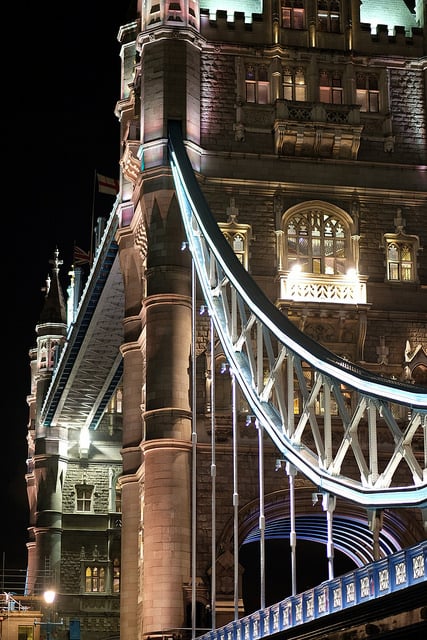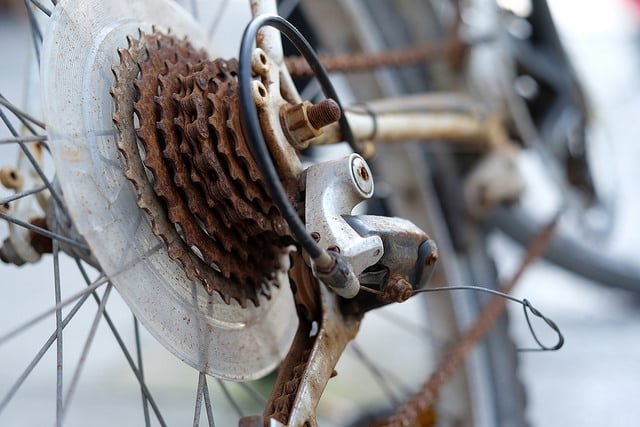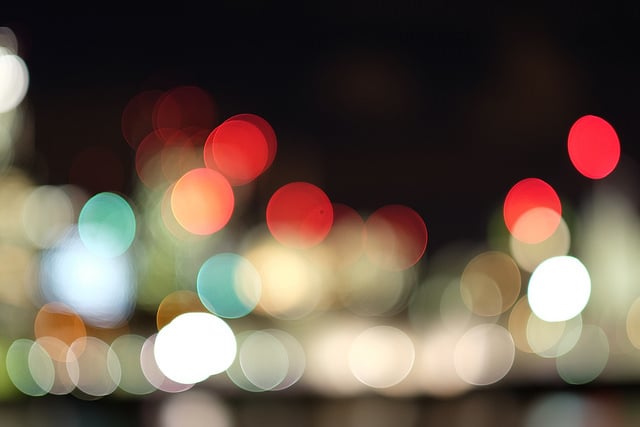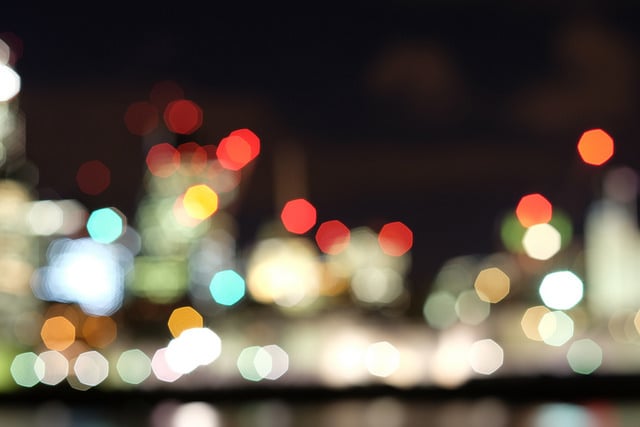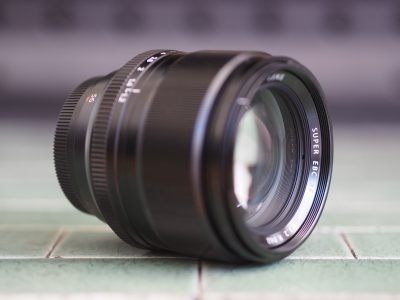Fujinon XF 56mm f1.2 R review
-
-
Written by Gordon Laing
In depth
The Fujifilm 56mm f1.2 is a high quality short telephoto prime lens for the X-system, compatible with all X-mount bodies from the X-Pro1 to the XT1. Announced in January 2014 it’s actually the first native X-mount lens aimed at portrait photographers. Mounted on an X-series body it delivers equivalent coverage of 84mm, which is both flattering for portrait photography and also useful for capturing tighter views than a standard lens. Meanwhile the bright f1.2 focal ratio gathers twice as much light as a lens at f1.8, making it ideal in low light, while also delivering shallower depth of field effects, again perfect for portrait work or isolating any subject against a blurred background.
The 56mm f1.2 fills an important gap in the current line-up of X-series lenses. There may have been the 60mm f2.4 macro for some time, but the system really needed a much brighter lens of a similar focal length to truly satisfy portrait and wedding photographers. By going for an f1.2 focal ratio, the 56mm also gains an exotic status shared by models like Leica’s Nocticron 42.5mm for Micro Four Thirds and Canon’s EF 85mm f1.2L USM. Of course in full-frame terms, the depth of field of the 56mm at f1.2 is more like f1.8 – and for the Nocticron on MFT it’s more like f2.4 – but in terms of exposures they’re all f1.2 and again offer the some of the shallowest depth of field options for their respective systems with autofocus capabilities.
Since there’s no other native X-mount primes of this focal length or speed it’s the only game in town. But that doesn’t mean Fujifilm should exploit a captive audience and rest on any laurels. Owners of the X system enjoy having access to a small but very high quality range of native lenses and expectations for this new model are understandably high. So with this in mind I put the 56mm f1.2 through its paces using an XT1, testing not just for sharpness and contrast, but also taking an in-depth look at the out-of-focus rendering across the aperture range and topping it off with autofocus tracking tests to see if it’s usable for close range action too.
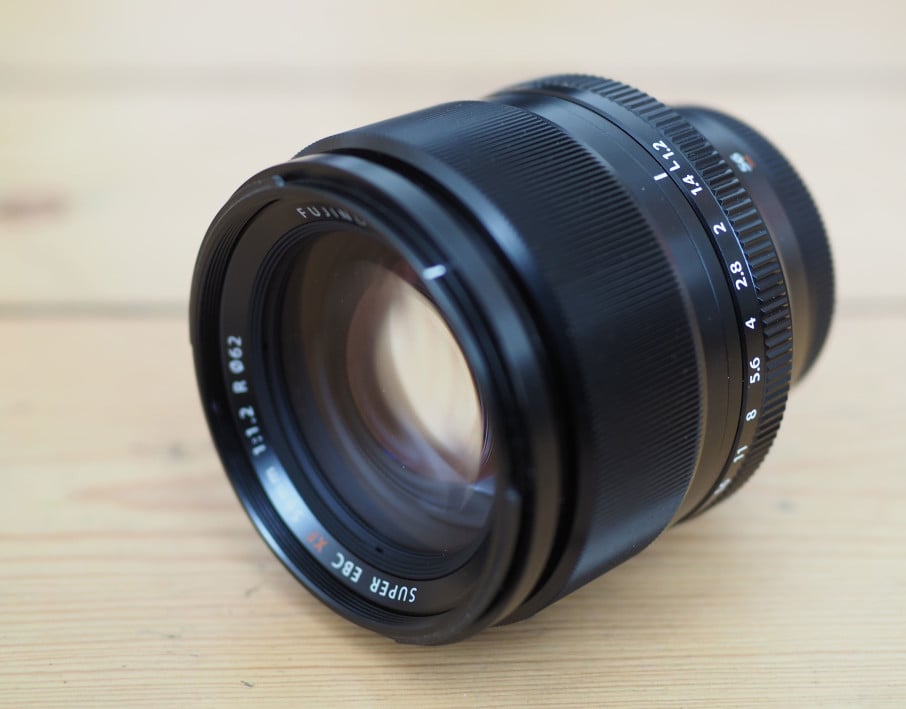
Fujifilm 56mm f1.2 design and build quality
The Fujifilm 56mm f1.2 is the largest and heaviest prime lens for the X-system to date, although measuring 73mm in diameter, 70mm in length and weighing 405g it’s hardly a lens you could describe as hefty. As you can see in the photo below, it’s a perfectly-balanced match for the XT1 and other larger X-series bodies, but if you’re shooting with one of the smaller bodies you may want to try it for size.
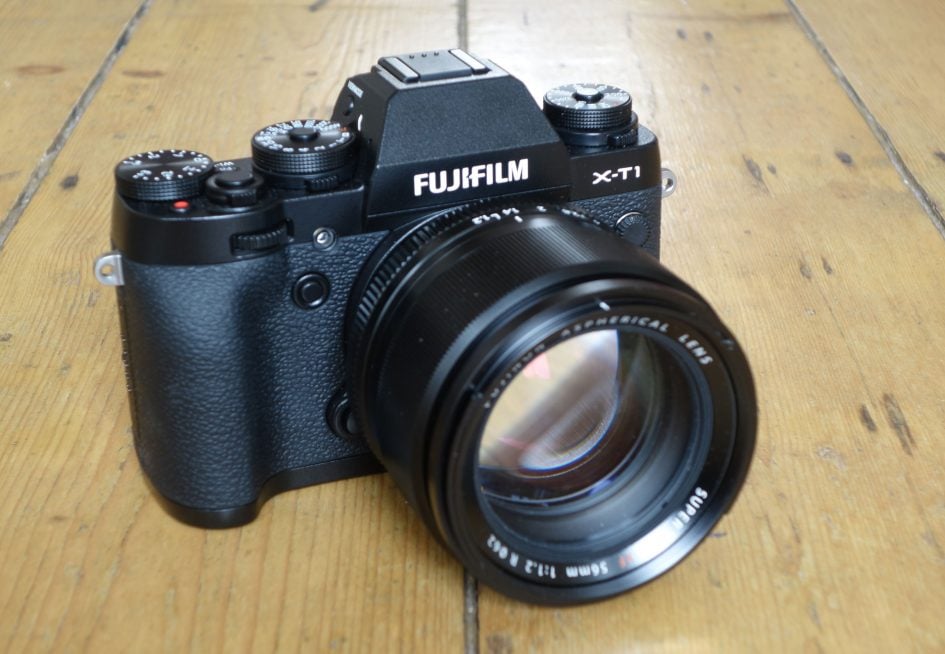
The 56mm f1.2 is actually a tad smaller and lighter than the Leica Nocticron 42.5mm f1.2 for the Micro Four Thirds system which measures 74mm in diameter, 77mm in length and weighs 425g. But place them side by side and beyond the Leica being a bit longer, they look and feel roughly the same size and weight. In terms of effective / full-frame coverage and depth of field, it’s fair to compare it to models like Canon’s EF 85mm f1.8, which measures 75mm in diameter, 72mm in length and weighs 425g. So all of these lenses are in roughly the same ballpark. To put it in perspective, the Fuji XF 18-55mm f2.8-4 measures 65mm in diameter, 70mm in length and weighs 310g, making the 56mm wider and heavier, but the same length, so it’ll occupy roughly the same space in your bag.
In terms of build quality the 56mm f1.2 feels very solid with its metal body and well-engineered construction. There’s a wide and heavily damped manual focusing ring which feels very smooth, if perhaps a little stiff, and closest to the mount a manual aperture ring with a fixed range of f1.2 to f16, followed by A for automatic aperture adjustment by the body. Despite its build quality the 56mm, like all Fuji X-series primes to date, is not weather-sealed.

Offering some protection for the front element though is a substantial lens hood, included in the box; with the hood mounted by its bayonet clip, the combination looks pretty serious. The hood is made from plastic, so inevitably lacks the classiness of metal alternatives such as the hood supplied with the Leica Nocticron, but it’s strong, light and works well, shielding the front element from stray light or glancing blows. The hood can be reversed over the barrel for transportation, and leaves just enough space to access the aperture ring, although obviously the manual focusing ring becomes hidden from view and use.
The filter thread measures 62mm, making it smaller than the 67mm thread on the Nocticron, but wider than the 58mm thread on the Canon EF 85mm f1.8, which lest we forget is a full-frame lens.
Fujifilm 56mm f1.2 focusing
I tested the Single, Continuous and Manual focusing of the Fuji 56mm f1.2 using an XT1 body, and compared it against the XF 18-55mm f2.8-4, the Zeiss Touit 32mm f1.8, and out of curiousity, also against the Leica Nocticron mounted on an Olympus OMD EM1 body.
The 56mm f1.2 focusing speed for Single AF is roughly similar to other Fuji X-series primes. It hunts back and forth briefly before generally locking-on in less than a second. In good light with a high contrast subject it can focus very quickly, but when going from near to far or vice versa, or in lower light, the focusing slows down and it’s not unusual to wait for a second or so for it to lock-onto the subject.
When using face detection in mid to low light I found the 56mm mounted on an XT1 could become quite frustrating, often going through a couple of seconds of hunting and sometimes failing to lock-on at all. This is as much a fault of the XT1 (and Fuji X bodies) though, and shouldn’t be attributed to the 56mm alone. But if you’re into portrait shooting you’ll find the 56mm works best with a single AF area and a subject who can keep still. Below is a portrait of Anna who graciously held her pose as I moved the AF area over her right eye and waited a second or so for the system to lock-on. Under these conditions you can capture lovely portraits with the 56mm, but in spontaneous situations I often found itfrustrating – if your style is more candid or street than posed, you may want to try it first for speed.
|
During the focusing process you can also feel and hear the motor in action – don’t get me wrong, it’s fairly subtle and comparable to other primes, but the 56mm f1.2 is certainly noisier and slower to focus than, say, the 18-55mm f2.8-4 kit zoom, and you’ll feel it more too. Now it’s true the 56mm’s focusing motors are shifting heavier glass elements than the kit zoom, but when comparing it side-by-side against the Leica Nocticron on the Olympus OMD EM1, I was struck by not only how much faster the MFT combination was for Single AF acquisition, but also how much quieter – and with little to no operational vibration either. Revealingly the EM1’s face detection was also more effective and I found it much easier to nail shallow depth-of-field portraits of restless kids using AF with the Nocticron and EM1 compared to the 56mm and XT1. But unless you own or are weighing-up both systems, this is purely academic. The 56mm focuses as fast as the other X-series primes and is definitely very usable, but don’t kid yourself it’s the fastest system in this regard.
If you’re shooting portraits, you may prefer to set the body to macro, which limits the focusing range on the 56mm to between 0.7m and 3m, which in my tests improved the time to lock-on.
When testing the continuous autofocus on the XT1 I was very impressed with its success rate compared to other mirrorless systems and even some DSLRs, but at the time the most challenging lens I had was the 18-55mm f2.8-4. So it was with some anticipation I tested the continuous AF on the XT1 with the 56mm, and I’m delighted to report it was equally successful at tracking subjects even with the aperture opened to f1.2. I had my kids run, scoot or bike towards me over a 100m distance and in each sequence the XT1 and 56mm f1.2 delivered at least an 80% hit rate, often higher still. This remains superior to any mirrorless system I’ve tested for continuous AF and better than all but the highest-end DSLRs too. The only caveat is the continuous AF needs to be using one of the central nine AF areas on the XT1 as this is the only region blessed by embedded phase detect AF sensors. Try continuous autofocusing outside this area with the 56mm at f1.2 and you’ll be lucky to get more than one shot in your sequence in focus. In the spirit of fairness though I should note that continuous AF remains an Achilles Heel for the rival Micro Four Thirds system, and there’s no way it can currently capture subjects in motion with anywhere near the same success as the XT1.
Manual focusing was also a delight with the 56mm mounted on the XT1. The focus peaking, magnified assistance and innovative split screen options on the XT1 meant it was easy to nail the focus manually, even with close subjects at f1.2. I’ve found peaking on some systems can only be used as a rough guide, but on the XT1 you really can rely on it 100% again even at f1.2. Indeed I could quite happily shoot with the 56mm using manual focus and peaking, and in low light it often proved quicker and more successful than using the AF, especially with the lackluster face detection.
Fujifilm 56mm f1.2 optical construction
Optically the 56mm f1.2 employs 14 elements in 10 groups, including one extra low dispersion and two aspherical elements. This makes it a more complex design than, say, the nine elements / seven groups of the Canon EF 85mm f1.8, although roughly similar to the 14 elements / 11 groups of the Leica Nocticron. Note the 56mm f1.2, like all Fuji X primes to date is not optically stabilized, and stabilisation is not built into any of the bodies either, so you’ll want to be using shutter speeds of around 1/85 or faster to avoid camera shake. This is par for the course for most short telephoto primes on other systems, although it’s worth mentioning the Leica Nocticron features optical stabilisation and of course there’s also the option of body-based stabilisation if you’re using an Olympus body; I found I could handhold the Nocticron on the EM1 as low as 1/5, whereas I really needed over 1/80 for the 56mm on the XT1, or 1/40 if I was leaning against something steady. Here’s a handheld example taken at 1/40 while leaning against a wall.
|
The closest focusing distance is 0.7m for a maximum magnification of 0.09x. This is closer than the 0.85m of the Canon EF 85mm f1.8, but further than the 0.5m of the Leica Nocticron. In use the 56mm can focus close enough for pretty much any portrait situation but I found it less flexible than the Nocticron for casual macro work. Sure the Nocticron at 0.5m is only delivering slightly greater 0.1x magnification, but it does allow you to get closer to non-portrait subjects for more detail. Below is an example of shooting close to the minimum focusing distance.
|
Lenses like the 56mm f1.2 are all about delivering a shallow depth of field with attractive rendering of out-of-focus areas, also known as the quality of the bokeh. A key specification in this process is attempting to maintain a smooth circle when wide open and also closing the aperture iris control.
With their apertures wide open both the 56mm and Nocticron rendered blurred specular highlights as oval / cats-eye shapes towards the edges, but this effect was much more pronounced on the Nocticron. However the Nocticron’s blurred highlights suffered from less outlining than the 56mm and to my eyes were creamier too. Both lenses thankfully avoided the concentric circles inside blurred highlights though.
I have lots of comparisons in my results pages, but just for now, here’s the first of two examples from the 56mm shot deliberately out-of-focus. The first is at f1.2 where the cats-eye shape and outlining is clear, but equally notice the absence of concentric rings inside the shapes.
|
Close each lens down and more differences emerge. The 56mm f1.2 employs seven aperture blades, compared to eight on the Canon EF 85mm f1.8 and nine on the Leica Nocticron. In my tests and samples I found blurred highlights on the 56mm with the aperture closed a little (say f2-4) readily exhibited a recognizably seven-sided shape, whereas on the Nocticron the effect was more subtle. Look carefully and you’d see nine-side shapes from the Noct, but the shape was always more rounded. Returning to my city view at night for the second version, I kept the focusing unchanged but closed the aperture to f2.8. Notice how specular highlights are now rendered as heptagons, revealing the seven-sided iris in the lens.
|
That said when shooting city lights at night, closing down the seven-sided iris of the 56mm delivered nicer-looking starburst effects than the Nocticron.
Fujifilm 56mm f1.2 corner coma and starburst at f4 100% crop from corner of frame | Nocticron 42.5mm f1.2 corner coma and starburst at f4 100% crop from corner of frame |
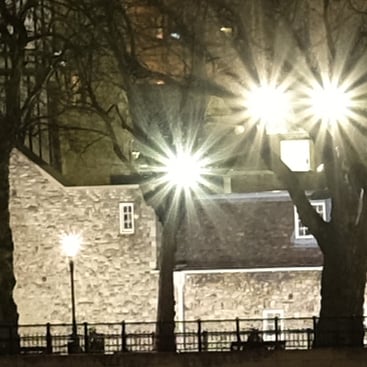 | 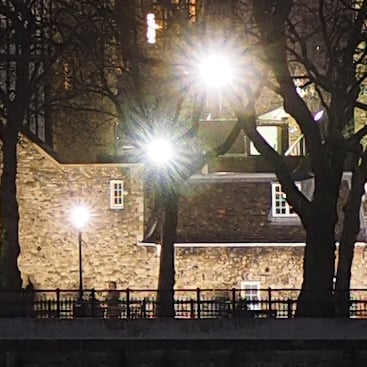 |
Fujifilm 56mm f1.2 corner crop at f4 | Nocticron 42.5mm f1.2 corner crop at f4 (different day) |
Which is better? A lot of it is personal choice, plus of course again unless you have – or are weighing-up – both systems, any comparison is purely academic. But it is interesting to see how both have quite different styles. The bottom line though is both can deliver a very shallow depth of field with attractive rendering of blurred areas and you can see this illustrated and compared in detail across my Fujifilm 56mm quality and Fujifilm 56mm sample images pages.
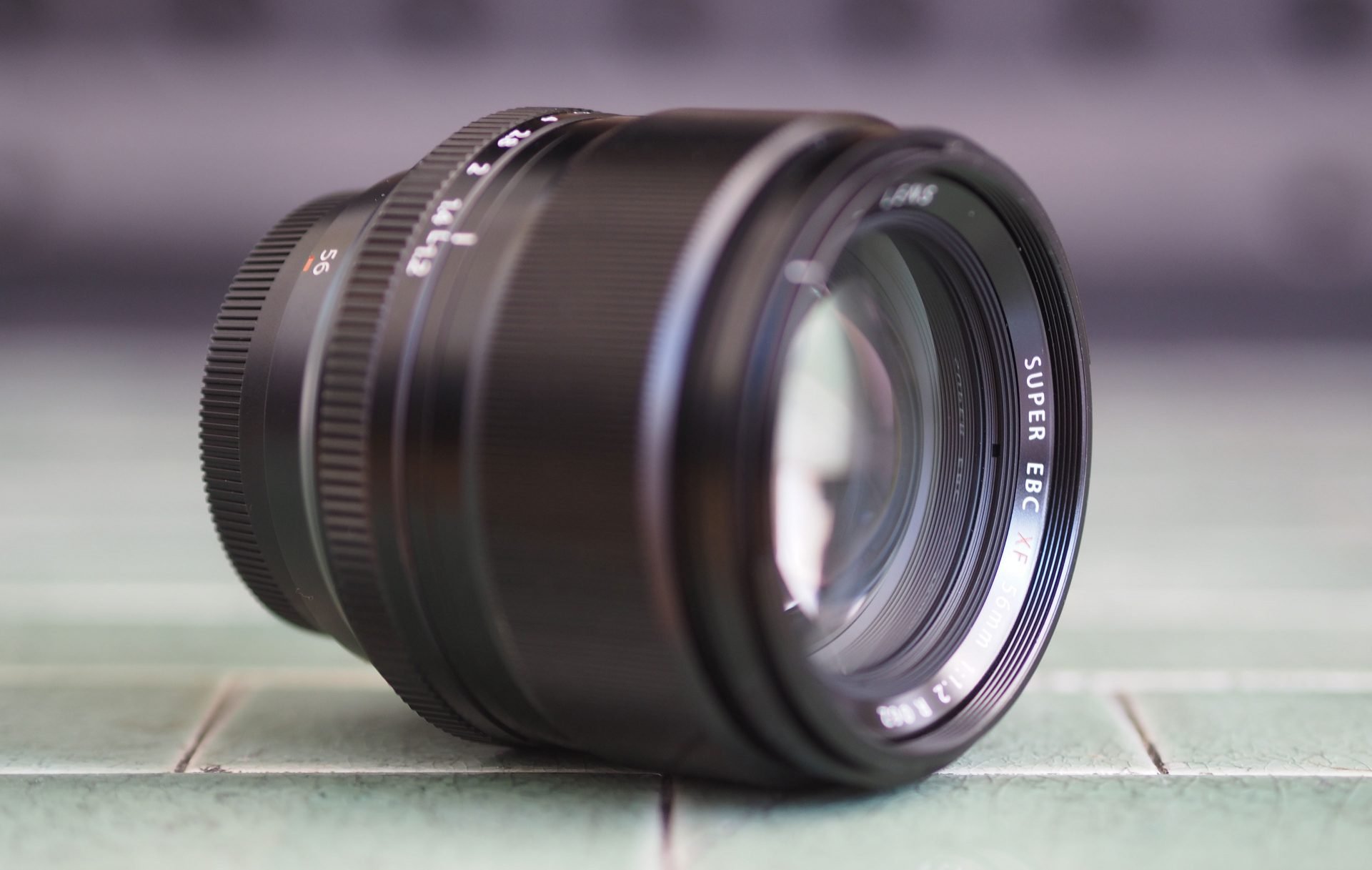
 The Fujifilm XF 56mm f1.2 R is a fast prime lens for Fujifilm's X-mount cameras that delivers a full-frame equivalent focal length of 84mm; this makes it perfect for short telephoto work including portraiture or simply concentrating on details, while the bright f1.2 focal ratio delivers very shallow depth of field effects (equivalent to f1.8 on full-frame) and allows you to maintain higher shutter speeds or lower ISOs in low light conditions. There's no image stabilisation or weather-sealing, but it remains a favourite for portrait shooters and is highly recommended. If you're on a tighter budget, compare with the XF 50mm f2 which focuses faster and sports weather-sealing too.
The Fujifilm XF 56mm f1.2 R is a fast prime lens for Fujifilm's X-mount cameras that delivers a full-frame equivalent focal length of 84mm; this makes it perfect for short telephoto work including portraiture or simply concentrating on details, while the bright f1.2 focal ratio delivers very shallow depth of field effects (equivalent to f1.8 on full-frame) and allows you to maintain higher shutter speeds or lower ISOs in low light conditions. There's no image stabilisation or weather-sealing, but it remains a favourite for portrait shooters and is highly recommended. If you're on a tighter budget, compare with the XF 50mm f2 which focuses faster and sports weather-sealing too.
